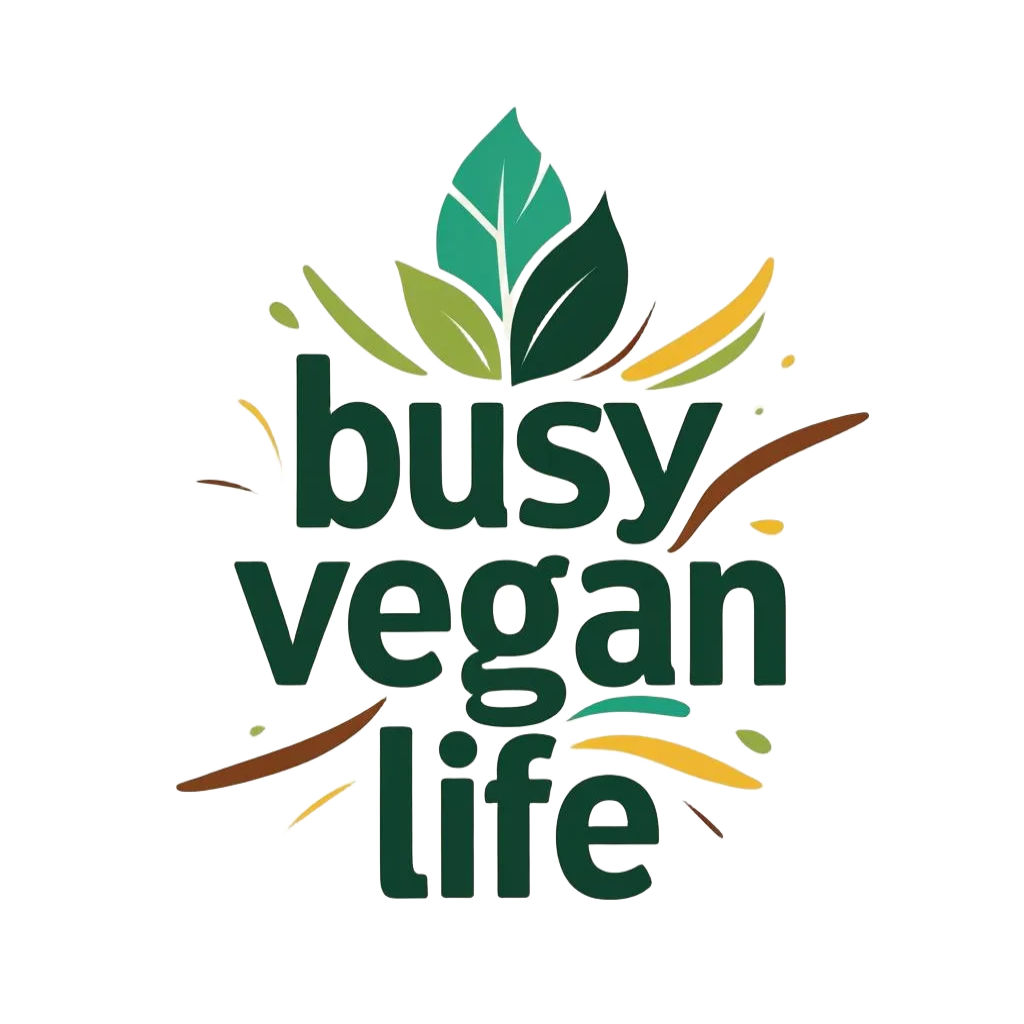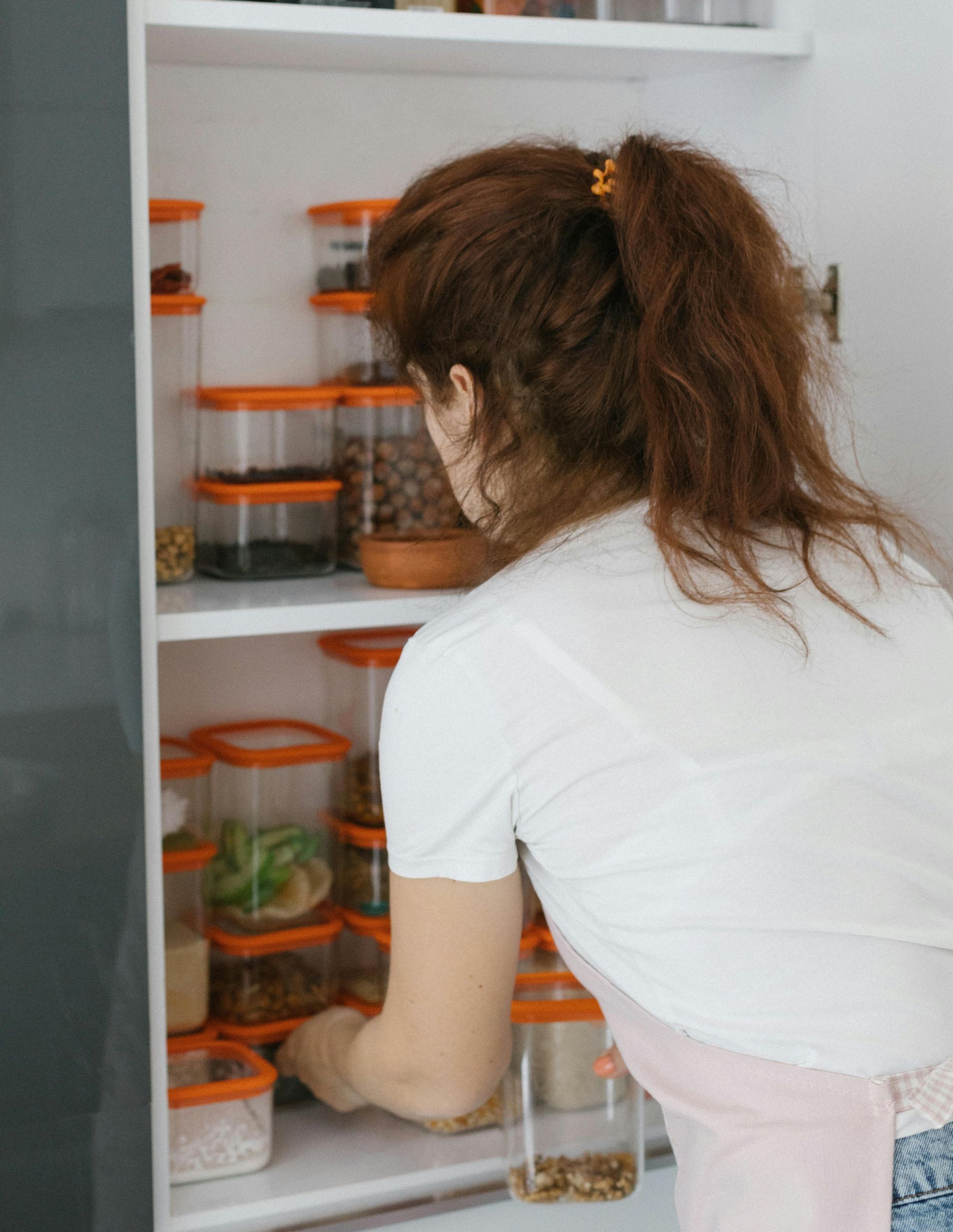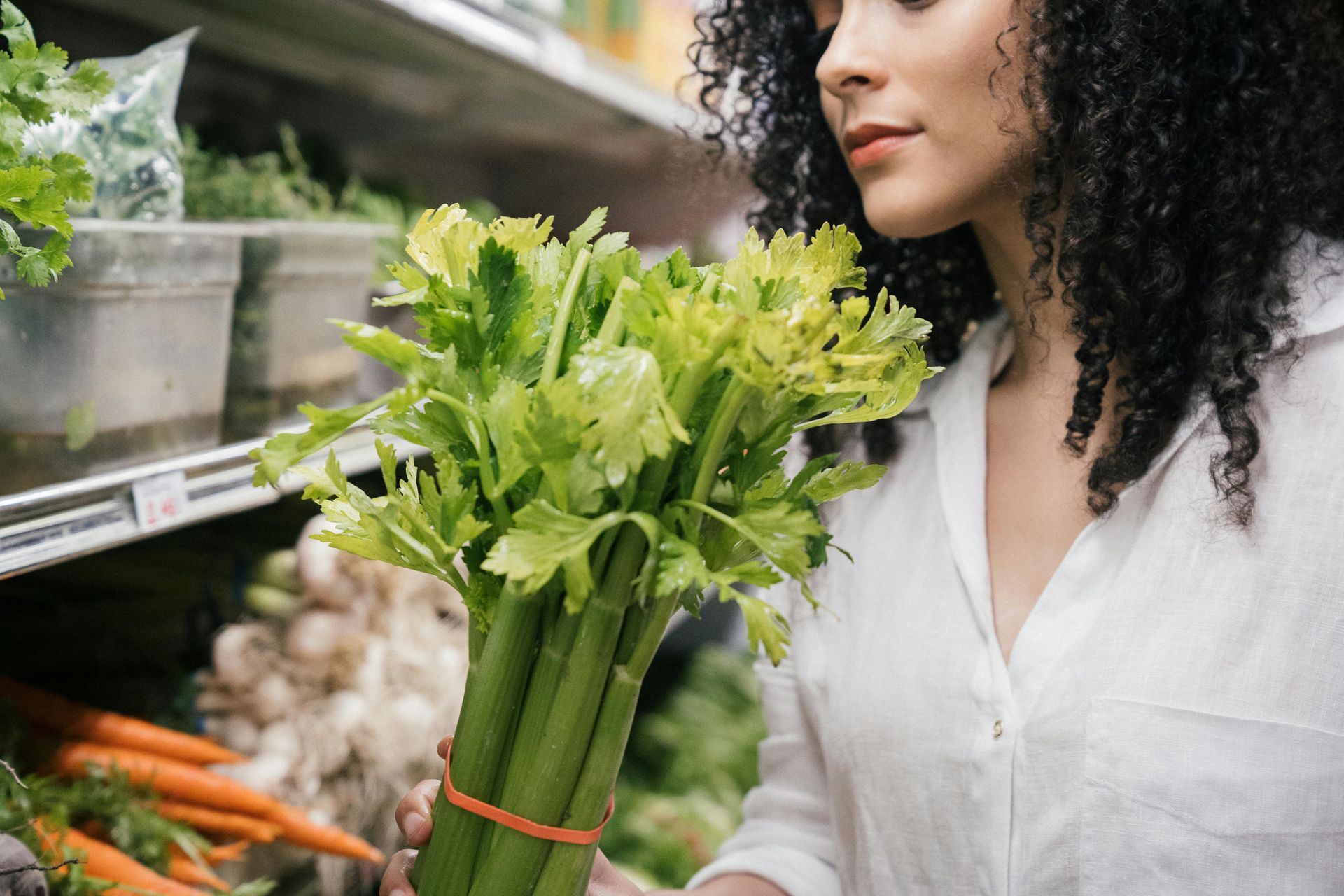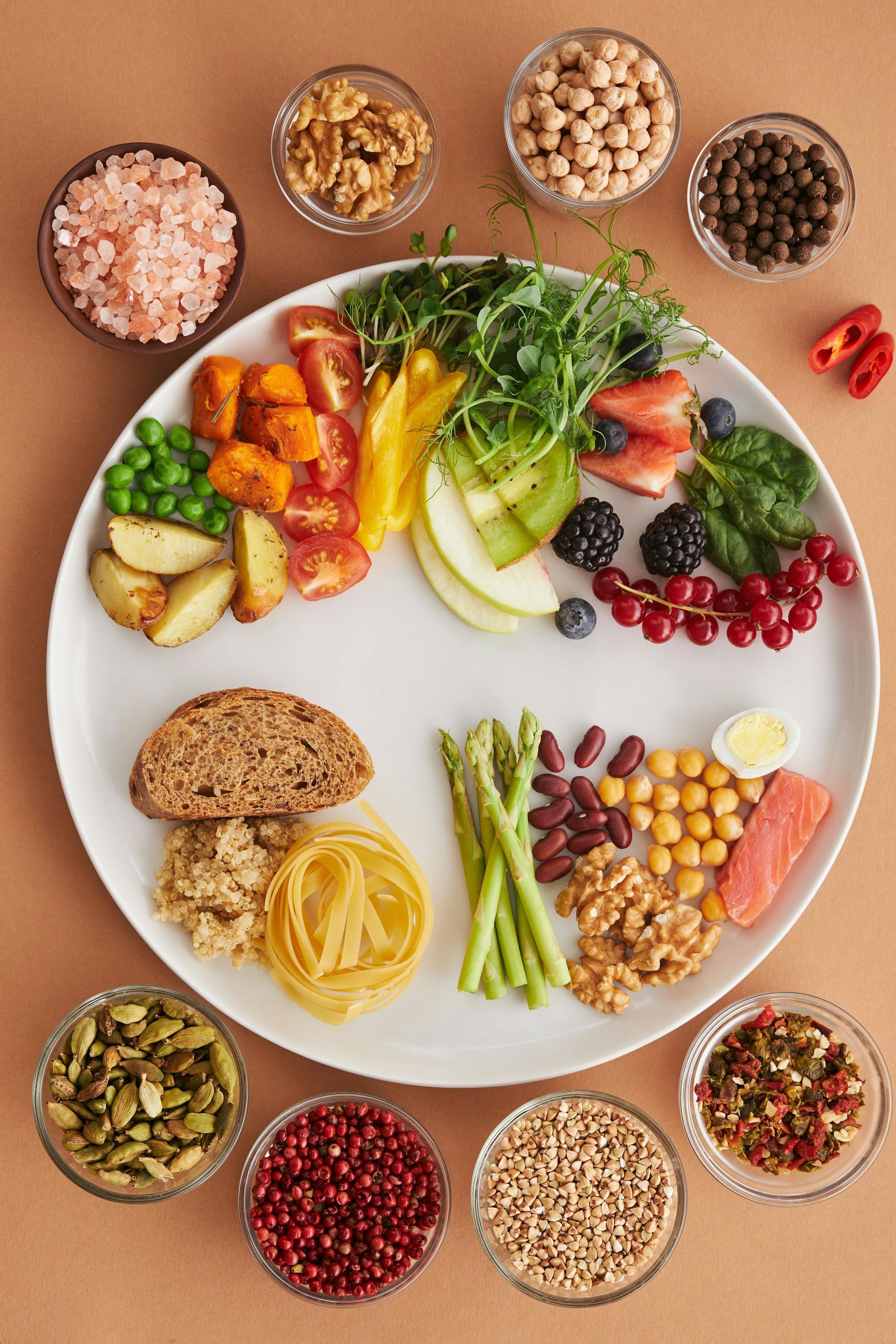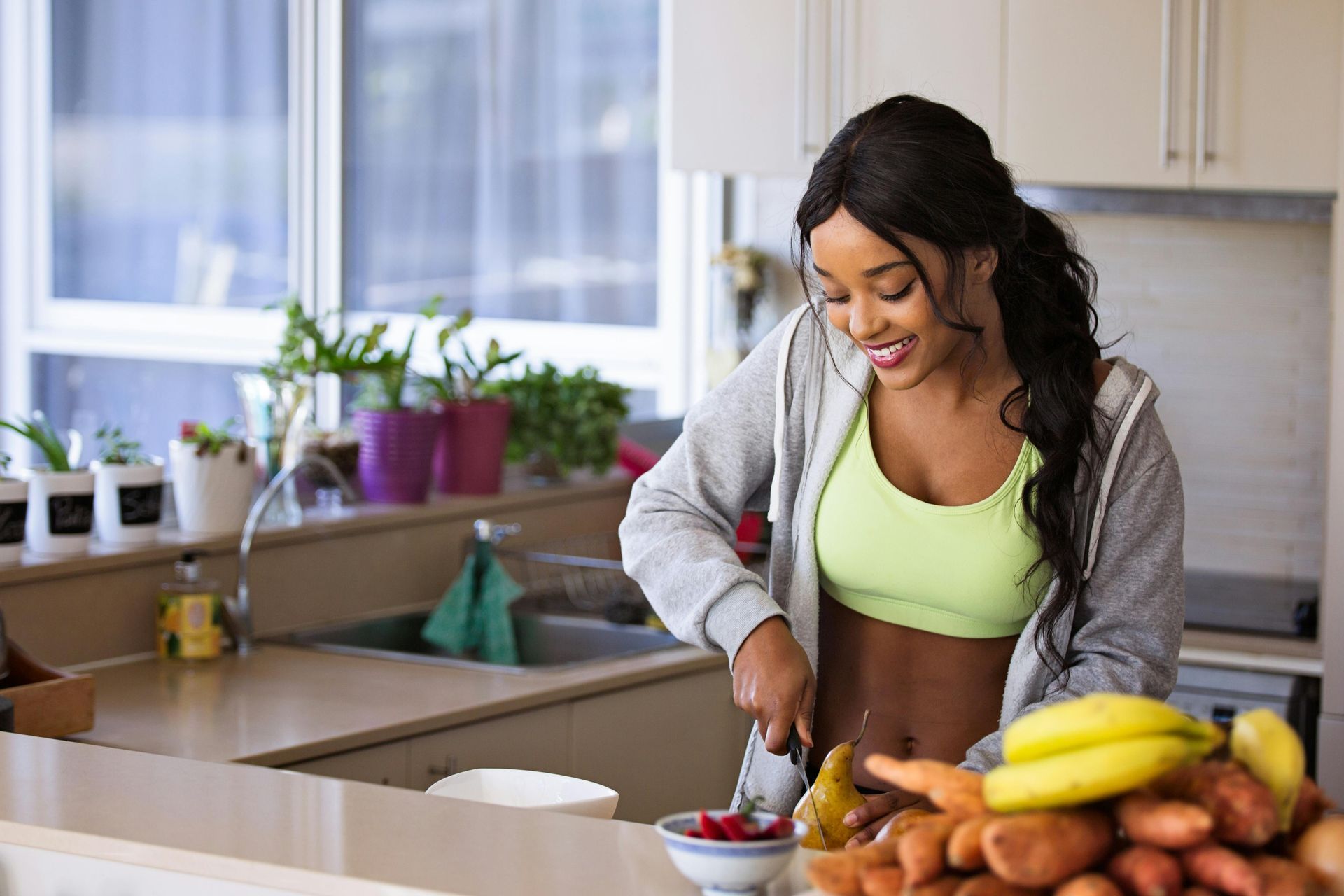What Are the Best Vegan Protein Sources for Busy Families? A Complete Vegan Protein List

How to Get Enough Vegan Protein: Complete Plant-Based List for Busy Families
You know that moment when your well-meaning friend or relative asks, "But where do you get your protein from for the hundredth time? Yup, that’s a frequently asked question about being a vegan.
The fact is, getting enough protein on a vegan diet isn't hard, it's surprisingly easy once you know what you need and where to look. If you are concerned about missing sufficient protein from your diet, the real challenge isn't finding protein; it's actually knowing which vegan protein sources work best for your busy lifestyle.
In this blog, you'll discover:
- Complete vegan protein foods with exact protein amounts
- Quick meal prep solutions for busy families
- Budget-friendly options that won't break the bank
- Kid-approved high protein vegan foods your whole family will love
- Simple combination strategies for complete amino acid profiles
- Time-saving shopping lists and meal planning tips
Why Your Family Needs This Vegan Protein List Right Now
As a busy vegan parent, student, or working professional, you're juggling a million things. The last thing you need is to stress about whether your family is getting adequate nutrition. That's exactly why I created this comprehensive vegan protein list.
Whether you're packing lunch boxes, meal prepping for the week, or trying to convince your teenagers that plant-based protein sources can actually taste amazing, this guide has you covered.
The REAL Protein Challenge Most Vegans Face
Leading nutrition organizations such as the National Academy of Medicine recommend 10-35% of your daily calories should come from protein. Broken down, this means a 2,000-calorie diet equals 50-175 grams of protein per day. There are many sources of protein available for vegans to get sufficient amounts.
The real challenges are:
- Time constraints: Finding quick, high protein vegan meals that fit your schedule
- Family acceptance: Getting kids and partners to enjoy vegan protein foods
- Budget concerns: Keeping costs reasonable while eating nutritiously
- Meal variety: Avoiding the tofu-every-day trap
- Social situations: Confidently answering "the protein question"
Complete Vegan Protein Sources: Your Go-To Reference Chart
Legumes: The Protein Powerhouses (8-18g per serving)
Black Beans - 15g protein per cup (cooked)
- Perfect for: Quick burrito bowls, soups, salads
- Kid-friendly tip: Blend into brownies for hidden protein
Lentils (Red) - 18g protein per cup (cooked)
- Perfect for: 15-minute curries, pasta sauces
- Time-saver: Cook from dry in 12 minutes
Chickpeas - 15g protein per cup (cooked)
- Perfect for: Roasted snacks, hummus, curry
- Meal prep winner: Roast a batch for the week
Kidney Beans - 15g protein per cup (cooked)
- Perfect for: Chili, tacos, salads
- Budget hack: Buy dried beans in bulk
Navy Beans - 15g protein per cup (cooked)
- Perfect for: Soups, stews, baked beans
- Storage tip: Freeze cooked beans in 1-cup portions
Soy-Based Proteins: The Complete Amino Acid Champions (10-25g per serving)
Tempeh - 15g protein per 3 oz serving
- Why it's perfect: Fermented for better digestion, nutty flavor
- Quick prep: Pan-fry with marinara for instant "meatballs"
Tofu (Extra-Firm) - 12g protein per 3 oz serving
- Family favorite: Press, cube, and air-fry with BBQ sauce
- Meal prep: Marinate on Sunday, cook all week
Edamame - 17g protein per cup (shelled)
- Perfect for: After-school snacks, salad toppers
- Parent win: Kids love popping them from pods
Seitan and Wheat-Based Proteins (20-25g per serving)
Seitan - 25g protein per 3.5 oz, making it one of the richest plant protein sources available:
- Perfect for: Stir-fries, sandwiches, "chicken" dishes
- Time-saver: Buy pre-made or batch cook on weekends
Nuts and Seeds: Portable Protein Boosters (5-8g per ounce)
Hemp Seeds - 10g protein per 3 tablespoons
- Perfect for: Smoothies, oatmeal, salad toppers
- No prep needed: Sprinkle straight from bag
Pumpkin Seeds - 5g protein per ounce
- Perfect for: Trail mix, roasted snacks
- Kid appeal: Let them help roast fresh pumpkin seeds
Almonds - 6g protein per ounce (about 23 almonds)
- Perfect for: Portable snacks, almond butter
- Budget tip: Buy in bulk, portion into small containers
Tahini (Sesame Seed Butter) - 5g protein per 2 tablespoons
- Perfect for: Dressings, dips, sandwich spreads
- Flavor boost: Mix with maple syrup for sweet applications
Grains: The Surprising Protein Contributors (4-8g per cup)
Quinoa - 8g protein per cup (cooked)
- Why it's special: Complete protein with all amino acids
- Meal prep magic: Cook large batches, use all week
Oats - 6g protein per cup (cooked)
- Perfect for: Breakfast, overnight oats, energy balls
- Time-saver: Make overnight oats on Sunday for the week
Brown Rice - 5g protein per cup (cooked)
- Perfect for: Base for bowls, stir-fries
- Batch cooking: Make in rice cooker, freeze portions
Vegetables: The Protein Surprises (2-5g per cup)
Broccoli - 3g protein per cup (cooked)
- Kid hack: Serve with nutritional yeast "cheese"
- Meal prep: Steam and freeze for quick additions
Spinach - 5g protein per cup (cooked)
- Perfect for: Hidden in smoothies, pasta dishes
- Fresh tip: Buy pre-washed bags for convenience
Brussels Sprouts - 3g protein per cup (cooked)
- Family favorite: Roast with balsamic glaze
- Prep tip: Halve and roast at 425°F for crispy edges
Quick, Smart Protein Combinations for Complete Nutrition
The "Complete Protein" Made Simple
You don't need to stress about combining proteins at every meal. Your body pools amino acids throughout the day. However, these classic combinations are naturally delicious and nutritionally complete:
Rice + Beans = Complete Protein Powerhouse
- Quick version: Microwave brown rice + canned black beans
- Flavor boost: Add salsa, avocado, and nutritional yeast
Peanut Butter + Whole Grain Bread = Kid-Approved Complete Protein
- Upgrade: Use sprouted grain bread for extra nutrition
- Time-saver: Pre-make PB&J, freeze for quick lunches
Hummus + Pita = Portable Complete Protein
- Make ahead: Batch prep hummus on Sundays
- Variety: Try different bean bases (white bean, black bean)
Budget-Friendly High Protein Vegan Foods
Research shows that nutritious plant proteins are actually some of the most affordable protein sources on the market. Here's how to maximize your protein dollars with the most cost-effective protein sources:
Dried Lentils - 16 cents per serving (1 cup cooked) = 7g protein
- Budget winner: About $0.02 per gram of protein
- Storage: Keep for 2-3 years in airtight containers
Dried Black Beans - Approximately 18 cents per serving = 15g protein
- Cost per protein gram: About $0.012
- Time-saver: Soak overnight, cook in slow cooker
Peanut Butter - $3-4 per jar = 32+ servings
- Protein payoff: 8g protein per 2 tablespoons
- Versatility: Sandwiches, smoothies, sauces, snacks
Money-Saving Shopping Strategies
- Buy in Bulk: Purchase dried legumes, grains, and nuts from bulk bins.
- Seasonal Shopping: Stock up on nuts during holiday sales
- Store Brands: Generic versions often cost 30-50% less
- Frozen Options: Frozen edamame and vegetables retain nutrition at lower cost
Quick High Protein Vegan Meals for Busy Families
15-Minute Protein-Packed Meals
Chickpea "Tuna" Salad Wraps
- Mash 1 can chickpeas + vegan mayo + celery + nutritional yeast
- Protein: 15g per wrap
- Prep time: 5 minutes
Lentil Sloppy Joes
- Sauté onions + 1 cup cooked red lentils + tomato sauce + spices
- Protein: 18g per serving
- Kid-approved: Serve on whole grain buns
Tofu Scramble Breakfast
- Crumble firm tofu + nutritional yeast + turmeric + vegetables
- Protein: 12g per serving
- Weekend prep: Pre-crumble tofu for quick weekday cooking
Meal Prep Protein Solutions
Sunday Protein Prep:
- Cook 2 cups dried beans in slow cooker
- Bake seasoned tofu cubes
- Roast mixed nuts and seeds
- Prepare quinoa or brown rice base
Freezer-Friendly Options:
- Bean-based burger patties
- Lentil "meatballs"
- Chickpea flour pancakes
- Nut-based energy balls
Essential Tools for Vegan Protein Success:
Kitchen Game-Changers
Instant Pot or Pressure Cooker
- Why you need it: Cooks dried beans in 30 minutes vs 3 hours
- Family benefit: One-pot meals with perfect texture
- ROI: Saves money on canned beans long-term
High-Speed Blender
- Protein power: Perfect smoothies with hemp seeds, nut butter
- Hidden veggie trick: Blend silken tofu into smoothies for 10g extra protein
- Time-saver: Make large batches, freeze portions for later
Food Processor
- Versatility: Hummus, nut butters, chickpea "tuna" salad
- Meal prep: Quickly chop vegetables for Buddha bowls
- Kid involvement: Let them help with safe processing tasks
Pantry Protein Essentials
Nutritional Yeast
- Protein boost: 8g per 2 tablespoons
- Flavor factor: Cheesy taste kids love
- Versatility: Sprinkle on everything from popcorn to pasta
Plant-Based Protein Powder
- Quick solution: Prices range from $1.33 to $5.91 per serving
- Smoothie upgrade: Add to breakfast smoothies for 20-25g protein
- Baking hack: Replace 1/4 cup flour with protein powder in muffins
You may also like:
Special Considerations for Busy Vegans: Students, Working Professionals & Families
For Vegan Students
Dorm Room Protein Essentials:
- Individual nut butter packets
- Shelf-stable silken tofu boxes
- Instant oatmeal with hemp seeds
- Roasted chickpeas (homemade or store-bought)
Campus Dining Tips:
- Load up on available legumes and grains
- Carry nutritional yeast for flavor and protein boost
- Request veggie burgers or tofu options
- Pack protein-rich snacks between meals
For Working Vegan Professionals
Office-Friendly Protein Snacks:
- Trail mix with nuts and seeds
- Roasted edamame
- Protein balls (make on weekends)
- Nut butter with apple slices
Business Travel Solutions:
- Pack protein powder for hotel smoothies
- Research restaurant menus in advance
- Use apps like HappyCow to find vegan-friendly options
- Carry shelf-stable protein backup options
For Vegan Parents
Lunchbox Protein Ideas:
- Sunbutter and jelly on whole grain bread
- Hummus with vegetables and pita
- Leftover lentil "meatballs"
- Homemade trail mix
Family Meal Planning:
- Involve kids in grocery shopping and meal prep
- Keep a list of family-approved protein sources
- Batch cook on weekends when possible
- Have backup protein options for busy nights
You May Also Like:
AI Vegan Meal Planner: Plan meals using groceries you already have at home or on your grocery list.
How to Decline Food at Social Events Without Being Rude
Your Free Vegan Protein Resources
Downloadable Protein Planning Tools
1. Complete Vegan Protein Chart (Printable PDF)
- All 50+ protein sources with exact amounts
- Organized by food category for easy reference
- Perfect for meal planning and grocery shopping
2. Weekly Vegan Protein Meal Planner (Digital Template)
- Pre-calculated protein goals for different family sizes
- Mix-and-match meal ideas for busy schedules
- Shopping list generator included
3. Kid-Friendly Vegan Protein Recipe Collection (Digital Download)
- 15 family-tested recipes with hidden protein
- Simple ingredients and quick preparation
- Nutrition facts included for each recipe
Download all three resources free and join our Busy Vegan Life community newsletter!
Seasonal Protein Shopping Guide
Spring Protein Picks
- Fresh peas and pea shoots (surprisingly high protein)
- Spring onions for flavor in legume dishes
- Early greens for protein-packed salads
Summer Protein Solutions
- Edamame (perfect for BBQs and picnics)
- Fresh corn (surprisingly decent protein content)
- Tomatoes to enhance bean-based dishes
Fall Protein Harvest
- Pumpkin seeds from carved pumpkins
- Hearty bean soups and stews
- Bulk buying nuts for winter storage
Winter Protein Comfort
- Slow cooker bean and grain dishes
- Warm quinoa breakfast bowls
- Protein-rich hot beverages with plant milk
Building Your Vegan Protein Confidence
Responding to "The Protein Question"
When someone asks where you get your protein, try this confident response:
"I get protein from the same place elephants, gorillas, and bulls do plants! Did you know that beans, grains, nuts, and vegetables provide all the protein our family needs? In fact, most Americans eat far more protein than necessary, whether they're vegan or not."
Tracking Your Success
Simple Protein Tracking:
- Aim for protein at each meal rather than counting grams
- Notice energy levels and satisfaction after meals
- Take photos of colorful, varied plates
- Celebrate new foods your family enjoys
Signs You're Getting Enough Protein:
- Stable energy throughout the day
- Good muscle recovery after exercise
- Healthy hair, skin, and nails
- Feeling satisfied after meals
Advanced Protein Strategies
Maximizing Protein Absorption
Combine Iron-Rich Foods: Pair legumes with vitamin C sources (tomatoes, citrus, bell peppers) to enhance iron absorption and protein utilization.
Soak and Sprout: Soaking beans and grains increases protein availability and reduces cooking time.
Fermented Options: Choose tempeh over tofu occasionally. Fermentation increases protein digestibility.
The Busy Vegan Life 5-Minute Protein Stack Method™
No measuring, no complicated recipes involved. Just a simple stacking formula that works every time.
LAYER 1: The Foundation (8-12g protein)
- Choose ONE: Cooked quinoa, brown rice, or sprouted grain bread
- Time hack: Keep pre-cooked grains in freezer, microwave 90 seconds
LAYER 2: The Powerhouse (12-18g protein)
- Choose ONE: ½ cup beans, 3 oz tofu/tempeh, or 2 tbsp nut butter
- Speed tip: Use canned beans (rinse for 30 seconds) or pre-marinated tofu
LAYER 3: The Booster (5-8g protein)
- Choose ONE: 2 tbsp hemp seeds, ¼ cup nuts, or 2 tbsp tahini
- Pro move: Pre-portion these in small containers for grab-and-go
LAYER 4: The Finisher (2-5g protein)
- Choose ONE: 2 tbsp nutritional yeast, handful of spinach, or ¼ cup edamame
- Flavor bonus: Nutritional yeast adds cheesy taste kids love
LAYER 5: The Enhancer (Optional flavor)
- Choose ONE: Hot sauce, lemon juice, herbs, or your favorite seasoning
- No protein added, but makes everything delicious
Total Time: 5 minutes maximum Total Protein: 27-43g guaranteed
Total Cost: Under $3 per serving
Real Family Examples Using The Stack Method:
Emma's After-School Stack (Teen-approved):
- Layer 1: Sprouted grain toast (6g)
- Layer 2: Almond butter (8g)
- Layer 3: Hemp seeds (5g)
- Layer 4: Sliced banana + cinnamon
- Total: 19g protein, 3 minutes
Marcus's Work Lunch Stack (Desk-friendly):
- Layer 1: Microwave brown rice (5g)
- Layer 2: Canned black beans, rinsed (15g)
- Layer 3: Tahini drizzle (5g)
- Layer 4: Nutritional yeast (4g)
- Layer 5: Hot sauce + lime
- Total: 29g protein, 4 minutes
Sophie's Breakfast Stack (Kid-friendly):
- Layer 1: Instant oatmeal (6g)
- Layer 2: Sunbutter swirl (8g)
- Layer 3: Chopped walnuts (4g)
- Layer 4: Frozen berries (1g)
- Total: 19g protein, 2 minutes
The Stack Method Advantages:
- No measuring required - all portions are easy to eyeball
- Infinitely customizable - swap ingredients based on preferences
- Budget-friendly - uses affordable whole food ingredients
Kid-inclusive - children can build their own stacks - Travel-ready - works in dorm rooms, offices, hotel rooms
- Allergy-adaptable - easy substitutions for any dietary restrictions
Advanced Stacking Strategies:
The Weekend Prep Stack: Pre-portion all Layer 3 and 4 ingredients in small containers. Kids can grab and build their own stacks during busy mornings.
The Flavor Rotation Stack: Keep the base layers consistent but rotate Layer 5 seasonings. Monday = Mexican spices, Tuesday = Italian herbs, Wednesday = Asian flavors.
The Emergency Stack: Always keep shelf-stable versions of each layer in your pantry, car, or office for protein emergencies.
Challenge: This Week's Action Plan
- Master the B.V.L. Stack Method: Try building 3 different protein stacks this week
- Download the exclusive Stack Guide above and customize it for your family's preferences
- Teach one family member the 5-layer system so they can build their own stacks
- Stock your pantry with at least 2 options from each stack layer
- Time yourself - see how fast you can build a complete protein stack (aim for under 5 minutes!)
Special Dietary Considerations
Soy-Free Vegan Protein
If your family avoids soy, focus on:
- Legumes (all varieties except soy)
- Nuts and seeds (especially hemp and pumpkin seeds)
- Grains (quinoa, oats, brown rice)
- Seitan (if wheat is okay)
- Pea-based protein powders
Gluten-Free Vegan Protein
Safe options include:
- All legumes and beans
- Nuts and seeds
- Quinoa and other gluten-free grains
- Rice protein powder
- Vegetables and fruits
Nut-Free Vegan Protein
Perfect for school lunch boxes:
- Seed butters (sunflower, pumpkin)
- All legumes and beans
- Soy products (if allowed)
- Seeds (hemp, chia, flax)
- Grains and vegetables
Meal Planning Made Simple
The 5-Day Vegan Protein Rotation
Monday: Bean-based (chili, burritos, soups)
Tuesday: Grain-focused (quinoa bowls, fried rice)
Wednesday: Soy celebration (tofu stir-fry, tempeh tacos)
Thursday: Nut and seed power (thai peanut dishes, tahini bowls)
Friday: Fun fusion (combining multiple protein sources)
Batch Cooking for Protein Success
Sunday Prep Session:
- Cook 3 cups dried beans or lentils
- Prepare 2 cups quinoa or brown rice
- Roast a sheet pan of vegetables
- Make a batch of energy balls or protein bars
- Pre-cut vegetables for quick meal assembly
This system ensures you always have protein components ready for quick meal assembly throughout the week.
Troubleshooting Common Challenges
"My Family Gets Bored with the Same Proteins"
Solution: Flavor Rotation Strategy
- Same protein, different cuisines (chickpeas in Italian, Indian, Mexican dishes)
- Texture variety (roasted, mashed, whole, blended)
- Temperature changes (hot soups, cold salads, room temperature wraps)
- Cooking method variations (baked, sautéed, grilled, raw)
"I Don't Have Time for Elaborate Meal Prep"
Solution: Minimal Prep Maximum Impact:
- Keep canned beans on hand for 5-minute additions
- Buy pre-cooked grains from freezer section
- Use a slow cooker for hands-off cooking
- Choose no-prep proteins (nuts, seeds, nut butters)
"Protein-Rich Foods Don't Keep My Kids Full"
Solution: Satiety Boosters
- Combine protein with healthy fats (avocado, tahini)
- Add fiber-rich vegetables to protein dishes
- Serve protein with complex carbohydrates
- Make sure portions are adequate for growing bodies
The Science Behind Vegan Protein Success
Understanding Protein Quality
Complete vs. Incomplete: While animal proteins are "complete" (containing all essential amino acids), eating a variety of plant proteins throughout the day provides all necessary amino acids.
Digestibility: Some plant proteins have lower digestibility than animal proteins, but this is easily compensated by eating slightly more protein overall which most vegans naturally do.
Biological Value: While plant proteins may have lower biological values individually, combining different plant proteins creates high-quality protein profiles.
Research-Backed Benefits
Studies consistently show that well-planned vegan diets provide adequate protein for all life stages, including:
- Childhood and adolescence
- Athletic performance
- Healthy aging
Final Thoughts: Next Steps to Vegan Protein Mastery
Congratulations! You now have everything you need to confidently navigate vegan protein sources for your busy family.
Remember, the goal isn't perfection, it's progress and making plant-based living work for your real life.
Love what you read? Check out The Busy Vegan Blog for more articles with practical solutions for those unique challenges vegans face on.

Frequently Asked Questions About Vegan Protein
Is plant protein as good as animal protein?
Quick Answer: : Absolutely. Plant proteins contain all the essential amino acids your body needs. The key is eating a variety of plant-based protein sources throughout the day.
For Athletes and Active Families:
- According to the National Institutes of Health, active athletes should aim for 1.2 and 2.0 grams of protein per kilogram of body weight daily or 0.5 to 0/9 grams of protein per pound of body weight. This means an athlete of 150 pounds should aim for 82-136 grams of protein daily.
- The USDA also recommends that 10%-35% of daily calories consumed by adults should come from protein
- Focus on complete vegan protein sources like quinoa, soy, and hemp
- Time protein intake around workouts for optimal muscle recovery
What to do if my kids won't eat beans and tofu!
Stealth Protein Strategies:
- Blend white beans into mac and cheese sauce
- Use lentil-based pasta for familiar shapes
- Make "meatballs" with lentils and familiar seasonings
- Serve edamame as a fun "pop the beans" snack
Gradual Introduction Method:
- Start with familiar flavors (BBQ tempeh strips)
- Mix new proteins with favorite foods
- Let kids help with cooking and preparation
- Avoid making it a battle. Keep offering without pressure.
Is vegan protein expensive?
Quick Answer: : Plant proteins are actually some of the most affordable protein sources available. The perception of expense often comes from comparing specialty vegan products to basic animal products.
Budget-Smart Approach:
- Focus on whole food proteins (beans, lentils, grains)
- Use specialty products (vegan meats) as occasional treats
- Buy seasonal produce for fresh additions
- Batch cook and freeze to reduce food waste
How much protein do vegans really need per day?
Quick Answer: Most nutrition experts recommend about 1 gram per kilogram of body weight for average adults, though anywhere from 10% to 35% of your daily calories should come from protein. For a 150-pound adult, this means about 54-68 grams daily. Research shows vegans typically get over 70 grams daily, well above requirements.
What's the cheapest way to get vegan protein?
Quick Answer: Dried lentils cost just 16 cents per serving and provide 7 grams of protein, making them incredibly cost-effective. Other budget winners include dried beans, oats, and peanut butter. Plant proteins are actually some of the most affordable protein sources available.
How do I know if my family is getting enough protein?
Quick Answer: Look for steady energy levels, good muscle recovery after exercise, healthy hair and nails, and feeling satisfied after meals. If you're eating a varied diet with legumes, grains, nuts, and vegetables, you're likely meeting protein needs.
What are the highest protein vegan foods?
Quick Answer: Seitan tops the list at 25 grams per 3.5-ounce serving. Other high-protein options include tempeh (15g per 3 oz), lentils (18g per cup), and most beans (15g per cup cooked).
Can vegan protein support muscle building?
Quick Answer: Yes! Many successful vegan athletes and bodybuilders prove this daily. Focus on complete vegan proteins like quinoa and soy products, eat adequate calories, and time protein intake around workouts for optimal results.
How do I meal prep vegan protein for busy weeks?
Quick Answer: Batch cook grains and legumes on Sundays, pre-cut tofu and season it, make large batches of hummus or tahini-based dressings, and prep grab-and-go snacks like energy balls or roasted chickpeas.
What vegan proteins work best for weight loss?
Quick Answer: Focus on high protein vegan foods that are also high in fiber: legumes, quinoa, and vegetables. These keep you full longer and require energy to digest. Avoid processed vegan meats and focus on whole food sources for weight management.
How Can Busy Vegans Get Enough Protein Every Day?
Quick Answer: Most adults need about 50–175g of protein daily (10–35% of calories). Vegans can easily meet this by eating a variety of beans, lentils, tofu, tempeh, seitan, nuts, seeds, and grains. Even on the busiest days, quick combinations like rice + beans, hummus + pita, or a tofu scramble can provide complete protein.
You know that moment when your well-meaning friend or relative asks, “But where do you get your protein from?” for the hundredth time? Or when you’re standing in the grocery store at 6 PM, exhausted, wondering how to get something protein-rich on the table fast?
Here’s the good news: getting enough protein on a vegan diet is not hard once you know where to look and how to use those foods in a busy schedule.
What Are the Highest Protein Vegan Foods?
Quick Answer:
- Seitan – 25g per 3.5 oz
- Tempeh – 15g per 3 oz
- Lentils – 18g per cup (cooked)
- Black beans – 15g per cup (cooked)
- Hemp seeds – 10g per 3 tbsp
Complete Vegan Protein Chart (Per Serving)
- Legumes (8–18g)
- Black Beans – 15g | Burrito bowls, soups
- Lentils (Red) – 18g | Curries, pasta sauce
- Chickpeas – 15g | Hummus, roasted snacks
- Kidney Beans – 15g | Chili, tacos
- Navy Beans – 15g | Stews, baked beans
Soy-Based Proteins (10–25g)
- Tempeh – 15g | Stir-fries, “meatballs”
- Tofu (Extra-Firm) – 12g | Air-fried with BBQ
- Edamame – 17g | Snacks, salad topper
Wheat-Based Proteins (20–25g)
- Seitan – 25g | Sandwiches, stir-fries
Nuts & Seeds (5–10g)
- Hemp Seeds – 10g | Smoothies, oatmeal
- Pumpkin Seeds – 5g | Trail mix, roasted
- Almonds – 6g | Snacks, nut butter
- Tahini – 5g | Dressings, dips
Grains (4–8g)
- Quinoa – 8g | Bowls, salads
- Oats – 6g | Overnight oats, energy balls
- Brown Rice – 5g | Stir-fry base
Vegetables (2–5g)
- Spinach – 5g | Smoothies, pasta
- Broccoli – 3g | Steamed, roasted
- Brussels Sprouts – 3g | Oven-roasted
Do Vegans Need to Combine Proteins at Every Meal?
Quick Answer: No. Your body pools amino acids throughout the day. You don’t need perfect combinations at every meal but classics like rice + beans or peanut butter + whole grain bread are naturally complete and delicious.
What Are the Best Budget-Friendly Vegan Proteins?
Quick Answer: Dried lentils (16¢/serving), dried black beans (18¢/serving), peanut butter, and oats are the cheapest high-protein vegan staples.
Money-Saving Tips:
- Buy in bulk (beans, grains, nuts)
- Use store brands
- Stock up during seasonal sales
- Keep frozen edamame & veggies for quick meals
What Are Quick High-Protein Vegan Meals for Busy Families?
Quick Answer:
- Chickpea “Tuna” Wraps – 15g protein, 5 minutes
- Lentil Sloppy Joes – 18g protein, 15 minutes
- Tofu Scramble – 12g protein, 10 minutes
How Does the B.V.L. 5-Minute Protein Stack Method™ Work?
Quick Answer: Layer grains, protein powerhouses, boosters, veggies, and flavor in under 5 minutes for 27–43g protein per serving.
The Layers:
- Foundation (8–12g) – quinoa, rice, or sprouted bread
- Powerhouse (12–18g) – beans, tofu, tempeh, nut butter
- Booster (5–8g) – hemp seeds, nuts, tahini
- Finisher (2–5g) – nutritional yeast, spinach, edamame
- Enhancer – herbs, spices, sauces
Can Kids Get Enough Protein on a Vegan Diet?
Quick Answer: Yes. Kids thrive with a variety of high-protein foods like nut butters, lentil pasta, edamame, hummus, and bean-based dishes.
Kid-Approved Tips:
- Blend white beans into mac and cheese
- Use lentil pasta for familiar shapes
- Serve edamame as a fun snack
What Are the Best Vegan Proteins for Athletes?
Quick Answer: Active vegans should aim for 1.2–2.0g protein/kg body weight daily. Top picks include soy products, quinoa, seitan, hemp seeds, and pea protein powder especially around workouts for recovery.
Is Vegan Protein Powder Necessary?
Quick Answer: Not essential, but convenient for smoothies, baking, or travel. Choose pea, hemp, or soy-based powders for 20–25g protein per serving.
How Can I Meal Prep Vegan Protein for the Week?
Quick Answer: Cook beans and grains on Sunday, pre-marinate tofu, roast nuts/seeds, and prep grab-and-go snacks like energy balls.
Subscribe to The Busy Vegan Blog
Thank you for subscribing the Busy Vegan Blog. We'll send you budget-friendly vegan options, quick recipes, meal prep ideas, and helpful tips to support your vegan lifestyle.
Oops, there was an error sending your message. Please try again later.
